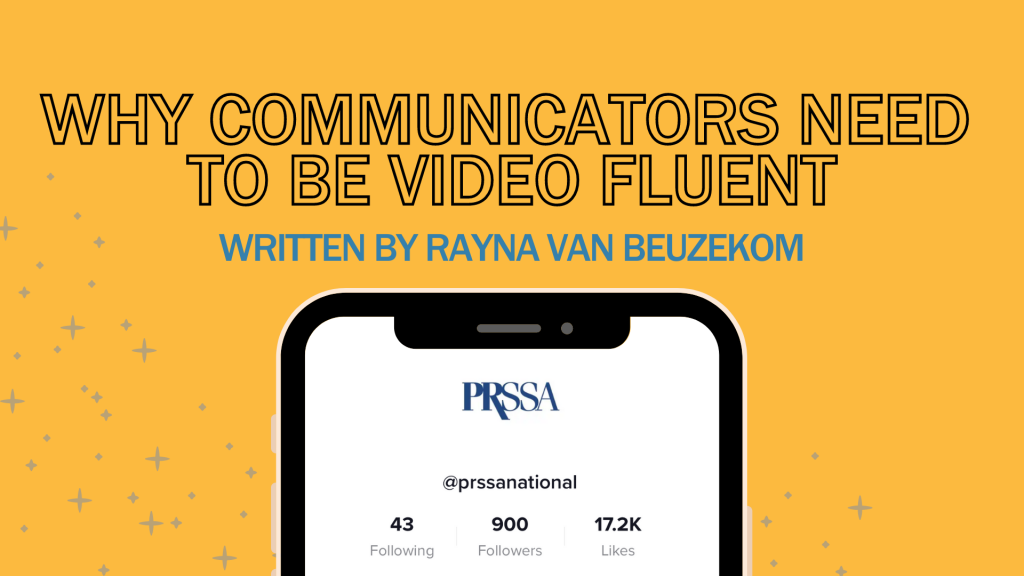Why Communicators Need to be Video Fluent

Video fluency is a skill set where an individual deeply understands the power and nature of videography. Being video fluent means communicators can accurately relay compelling stories to stakeholders.
In an increasingly digital world, being video fluent is no longer an option, but a necessity for communicators. Too often brands, especially newer brands, post videos with poor camerawork, audio, or even storytelling. The next generation of communicators must be proficient in videography.
Why Communicators Need to be Video Fluent.
- Videos are Powerful.
Photos can say what words can’t. Videos take that one step further.
Take the Reebok 25,915 Days ad for example. The story elicits a series of emotions as viewers watch the life of a woman move backward until she is a baby. The message is that our days are limited, evoking the feeling of inspiration from the audience. Behind this video, there was a communicator who knew what story they wanted to tell. The creators were able to accurately and thoroughly explain to the directors what emotions should arise.
Videos tell audiences what stagnant images can’t. The combination of on-screen graphics, thoughtful framing and impactful music results in brands communicating on a deeper level.
- TikTok.
The popular social media app, originally known as Musical.ly, is not going anywhere anytime soon. TikTok controls which products consumers buy, which music is in the top 100 and what Gen Z cares about. It has the highest engagement compared to other social media apps. TikTok is 100% video-based.
Quality of TikTok videos matters. If your video is grainy or has poor lighting, users will move on to an aesthetically pleasing video. If the video drags on too long, the short attention spanned users will scroll past immediately. Watch time is one of the most important factors in boosting videos onto the For You Page, so it’s imperative to engage users quickly and effectively.
- Anyone can make a video.
If Fisher-Price makes cameras for ages 3 years and up, anyone can pick up a camera (or book) and become video fluent. In the digital age, there is no excuse for a lack of video knowledge. The largest learning curve for communicators will likely be understanding the composition of videos.
How will a certain angle affect the audience’s emotion? Can a color overlay change how an actor is perceived?
Video Making is another creative channel to demonstrate a brand’s voice. Become an expert in it before the competition does.
Where to Start?
If you want hands-on experience, the two industry-standard consumer video editing softwares are Final Cut Pro X, which is a fixed, one-time price, or Adobe Premiere Pro, which is subscription-based. Final Cut Pro X is more user intuitive, especially because the interface is similar to iMovie. Adobe Premiere Pro can lead to more advanced techniques, depending on your needs.
If you prefer reading about videography, check out How To Shoot Video That Doesn’t Suck by Steve Sockman and Rebel Without A Crew by Robert Rodriguez.
Videos will be here for a long time, and it’s time to start growing your skillset. The only way to learn is by doing.

Rayna van Beuzekom is a third-year public relations student with a women’s studies minor at the University of Florida. She serves as the vice president of diversity and inclusion for PRSSA 2021–2022 National Committee. Follow her on Twitter @raynacosette and connect with her on LinkedIn.
